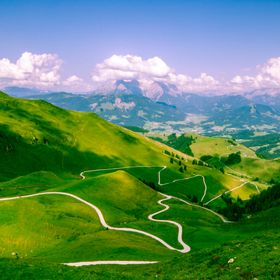
GeorgeClarkePhoto
FollowViews
306
Likes
Awards
Superb Composition
Jaw Dropping
Exceptional Contrast
Outstanding Creativity
Top Choice
Absolute Masterpiece
Same photographer See allBehind The Lens
Behind The Lens
Location
This photo was taken on the beach, atop a narrow wave break in Salcombe, Devon, whilst on holiday. The water here (typically) is actually very violent, with splashes a few metres high sometimes. For that reason, I had not dared to go up there with my camera before.Time
I had decided to walk down to the beach with my camera to see if I could catch the sunset at around 7PM, only to find that it was actually too bright to shoot some long exposures (bearing in mind I had no ND filter at the time). So instead I decided to try and silhouette the rocks and the three boats that happened to be lined up in the background.Lighting
The sunsets here are amazing; they create very distinct bands of warm, bright, orange light which contrast the very underexposed foreground in this picture in a way that I liked. I love how the water has been captured with such rich detail, while the rocks are more feathered in outline.Equipment
I was travelling light, so the extent of my equipment was a Panasonic Lumix G3 (my first camera) and a 14-42mm kit lens. I initially used the concrete as a stabilizer, as I had no time to get my tripod. Frankly, other than a set of Polaroid diopters/macro lenses and a Velbon tripod, I had no other equipment at the time. I think in a way this limitation worked to my advantage giving me the composition I ended up with, rather than the concept I had intended to photograph.Inspiration
A few nights before this, I had been trying to make a time lapse of the clouds before sunset, but I decided out of this and instead took a long exposure of the clouds. I knew that I wanted to include the sea in my next picture, and for once it was a relatively unclouded night. I had also been shown a picture taken by a local photographer of the light reflecting off the sea in this very cove, which was a definite inspiration for me.Editing
Yes, aside from minor corrections, I love the effect that a slightly boosted saturation and contrast gives. I also enjoy experimenting with monochrome or selective colour in some cases. For landscape pieces, I have often used HDR, and have begun experimenting with panoramas. In a recent photograph I combined the two for a nice result but a very nasty file size! I generally leave the framing and exposure alone; though I do tend to underexpose the image very little and bring out the foreground. Generally however, I find that my better images have been left more natural and have made use of less post-processing.In my camera bag
I try to fit the majority of my equipment into my Lowerpro Bag, and often precariously strap my relatively new Manfrotto 390 series tripod to the back. Inside the bag, I have my trusty d7000 with the 35mm prime attached, then usually my 55-200mm lens in a pouch to the side. I use the 35mm lens pretty much all the time - it's extremely versatile in my opinion. I also have a remote shutter release/intervalometer which I use a lot in long exposures, though occasionally for a time lapse. Finally, I have a Hoya UV filter and Variable ND filter, as well as a set of Polaroid diopters. In the future, I hope to buy a new lens (probably a prime).Feedback
I had not initially planned to photograph the boats: I only noticed them when I climbed onto the sea barrier. Try to get something interesting in the picture if possible - e.g a bird on a rock or a lighthouse. Conversely, the rocks are also an essential part of the picture, giving a sense of scale to an otherwise seemingly endless sea. I think the water has been captured with such great detail - perhaps slightly different to the cliché of long exposure to create a calm, very blurred surface. Here it is very faintly blurred, which is perhaps an interesting thing to try. I would also recommend trying to get a low angle on the water - I knelt down and got as close to the edge as possible (thankfully without falling in) and used the concrete as a balance. Luckily this camera had a vari-angle screen. I didn't think to frame it using rule of thirds - although this is important, I think it made a nice effect to have a blue sky, followed by the red sunset, then blue sea. Finally, try to wait until the sun is just below the horizon - the last part of the sunset - so that you get more feathered and less harsh bands of colour. This may take a few attempts, you have to be ready or you'll miss it.

























